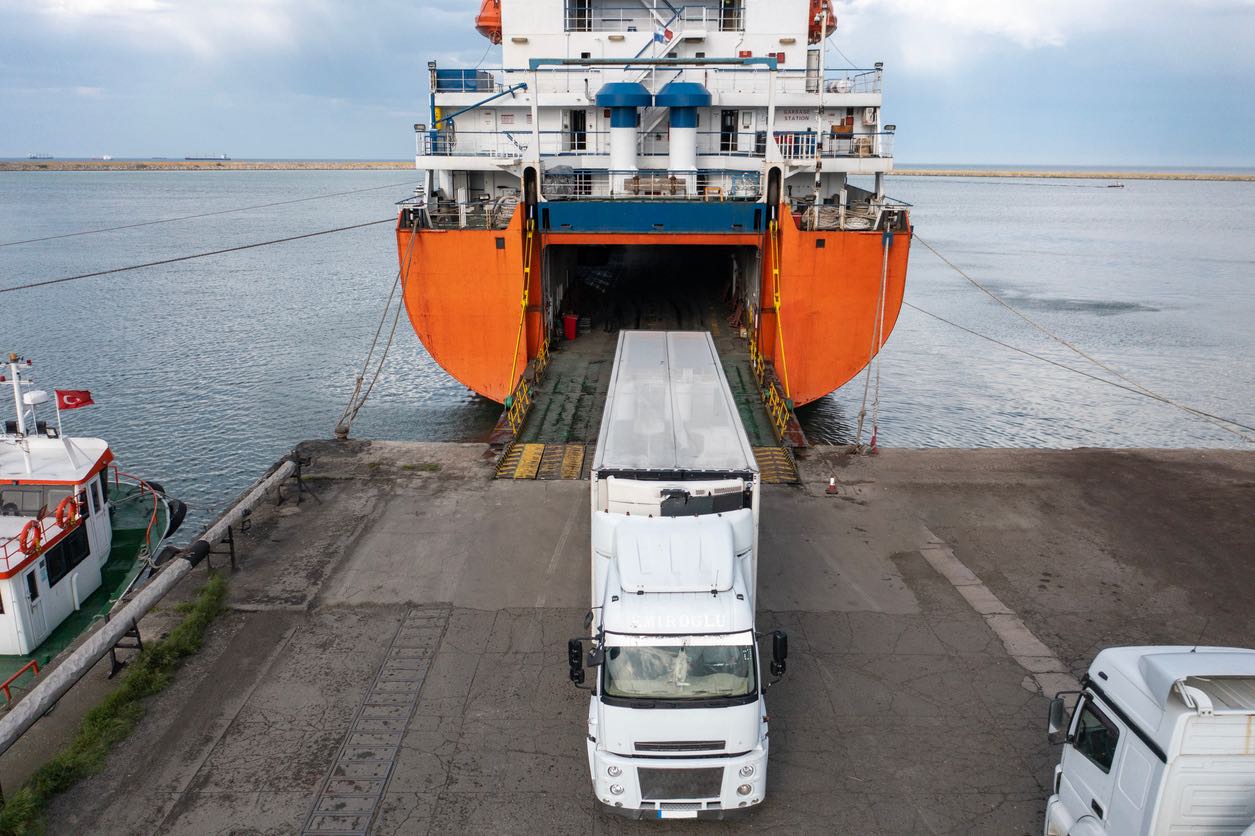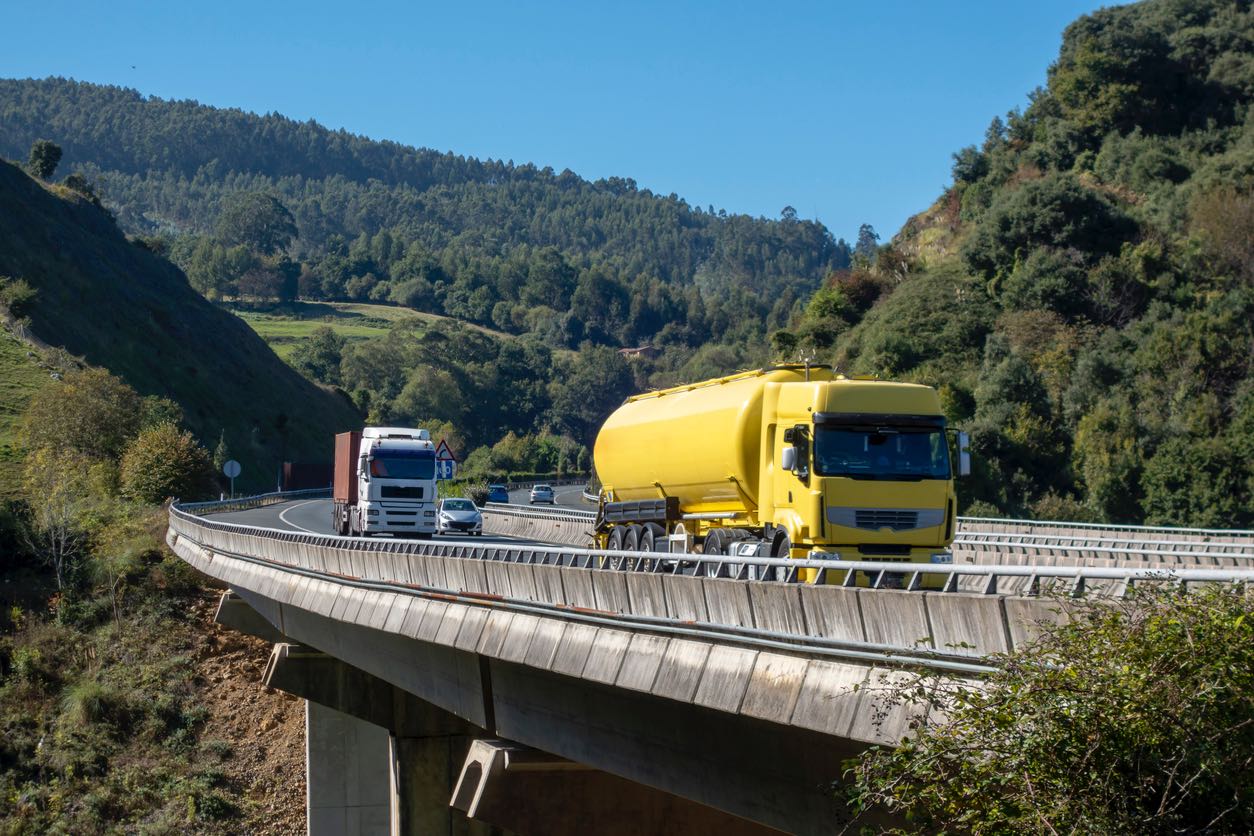Undoubtedly, Puerto Rico is appealing. Its magnificent beaches, rich culture, and promise of a tropical paradise inside U.S. territory entice visitors to its shores. Some dream of a vacation, but others want to start over in the Caribbean. As with any major move, logistics must be considered, and one of the biggest is “What do I do with my car?”
Transporting a car across oceans is difficult. Shipping a motor vehicle, especially to Puerto Rico, is multifaceted. There’s emotional attachment to one’s automobile, convenience, and the financial cost of shipping or buying a new one upon arrival. The prospect of driving around Puerto Rican coasts in your own car seems romantic, but getting there is difficult.
Shipping a car to Puerto Rico is complicated. This guide simplifies it. We explore what it means to bring your car to this Caribbean paradise, from expenses to perks and cons. If you’re undecided or just want to understand the process, we can help. Let’s travel together, making educated, sensible, and personalized decisions.

For those who want to experience a tropical paradise without leaving the comforts of U.S. territory, Puerto Rico serves as a beacon. Numerous people have flocked to its shores because of its sun-kissed beaches and mesmerizing turquoise waters. The island’s appeal comes from both its natural beauty and the simplicity it provides for Americans. It becomes an even more alluring location given the possibility of moving there without having to go through the time-consuming procedures of obtaining a visa or new citizenship.
However, every paradise has its difficulties. The logistical challenge for many people moving to Puerto Rico goes beyond simply packing up their belongings and finding a new place to live. Choosing how to transport their vehicle is one of the most difficult tasks they must complete. This ostensibly simple aspect of moving turns out to be a crucial decision, fusing pragmatism with the emotional attachment many people have to their cars.
When moving to a new place, many people feel excited about new beginnings, and for many, this includes the potential for purchasing a brand-new car. Driving around in a fresh set of wheels is undoubtedly appealing, especially in a beautiful place like Puerto Rico. But, as with many other things in life, the idea’s appeal may not match up with reality as it actually is.
Puerto Rico’s automobile market has particularly unusual cost dynamics. Purchasing a new car on the island can be expensive because prices often exceed expectations. Exporting cars overseas is occasionally the most cost-effective option, despite the fact that it comes with its own set of challenges and expenses. When making a decision, it’s crucial to weigh the potential benefits of a new purchase in the short term against their potential costs over the long term.

It is not a choice to be made lightly to ship a car to or from Puerto Rico, especially when taking into account the costs involved. The entire process can be expensive, with prices ranging from $1,500 to a mind-boggling $5,000. These numbers are not made up off the top of someone’s head; they are the result of numerous variables, each of which influences the final price. Every aspect can affect the price, from the sheer distance the vehicle must travel to its size and specifications.
Additionally, the choice of transport service can affect the costs. The price can differ greatly depending on whether you choose a door-to-door service or a more conventional port-to-port option. However, there are additional financial factors to take into account in addition to the immediate shipping costs. Despite being a U.S. territory, Puerto Rico has its own set of taxes and rules. Puerto Rican import taxes and overseas transportation costs can quickly mount up, so it’s important for people to plan their budgets carefully and make sure they’re ready for the full range of costs.
It takes a lot of work to ship a car, especially when doing so across great distances and international waters. This project’s cost isn’t just some arbitrary sum; rather, it’s the result of a number of factors, each of which contributed a portion of the overall sum. Anyone thinking about shipping their car to Puerto Rico needs to understand these factors. Making wise decisions that might save money is aided by it in addition to budgeting. Let’s explore the nuances of what affects shipping costs and how each factor functions.
- The Mileage Is Important: Total Shipping Distance The basic idea is that the farther away something is, the more expensive it will be. This is due to the fact that longer routes require more fuel, time, and resources. For instance, transporting a car to Puerto Rico from Washington or Montana, in the Pacific Northwest, takes longer than it does from South Florida, which is closer to the Caribbean. As a result, the origin of the shipment has a significant impact on the overall cost, with higher costs incurred at farther locations.
- Convenience Comes at a Price: Vehicle Drop-Off and Pick-Up Options The method used to pick up and deliver your vehicle can have a big impact on the shipping costs. The convenience of having the shipping company pick up your car from your door and deliver it to the Puerto Rican port is provided by options like door-to-port. Port-to-port services, on the other hand, necessitate dropping off and picking up the vehicle at the relevant ports. Although the former is more convenient, it is also more expensive. There is also the premium door-to-door service, which ensures maximum convenience at a higher price by picking up the vehicle from your location and delivering it directly to your new address in Puerto Rico.
- Dimensions and Luxury: Vehicle Information The cost of shipping your car directly depends on its size and weight. Higher fees result from larger, heavier vehicles taking up more space and adding significantly more weight to the transport vessel. Beyond dimensions and weight, a vehicle’s type is important. Luxury, antique, or collectible automobiles frequently have their own requirements. They might require special handling, extra insurance, or particular transportation requirements, all of which can raise the price.
- Ground Transportation Options: Exposure vs. Protection You typically have two options when it comes to moving your car on land: open transport or enclosed transport. Your car will be placed on a carrier and left outside in open transport. Although it is the more popular and reasonably priced option, this method exposes your car to the elements and potential road debris. In contrast, enclosed transport protects your vehicle from the elements, ensuring that it keeps its perfect condition. The service is more expensive than its open counterpart due to the premium cost of this protection, which is particularly popular for high-end or custom vehicles.

It can be intimidating to navigate the vast world of vehicle shipping, particularly when it comes to international shipping. The method you select to ship your car across the ocean will likely have a big impact on both the safety of your car and your wallet. It’s important to comprehend the specifics of each approach, including how your car is stored and the associated expenses. The two main at-sea shipping techniques will be thoroughly examined in this section, along with their benefits, shortcomings, and suitability for various types of vehicles.
- The Drive-On, Drive-Off Approach: Roll-On Roll-Off (RoRo) The Roll-On Roll-Off method, also known as RoRo, is exactly what its name implies. Vehicles are driven right up to the ship and fastened to the deck with strong fasteners. As a result of its ease of use and low cost, this method is popular with many people. It’s like leaving your vehicle in a huge floating garage. Even though your car is shielded from the elements like rain and saltwater, it is still exposed to the interior conditions of the ship where it is parked next to many other cars. The vehicle is then driven off the ship once it has arrived at its destination, prepared for its upcoming journey on Puerto Rican roads.
- Container Shipping: Your Car’s Personal Sea Suite Selecting container shipping is comparable to reserving a private suite for your car. The car is carefully positioned inside a shipping container to protect it from the elements and any potential collisions with other vehicles. This technique is preferred for luxury, antique, or custom vehicles because it adds an extra layer of security. The cost of this increased protection is however high. In general, container shipping is more expensive than RoRo. Additionally, there is the option of renting a single container, which is more expensive, or sharing one with other vehicles. This approach not only guarantees the security of your car but also gives you peace of mind because your car will travel across the ocean cocooned in its own secure area.

Car shipping to Puerto Rico is an adventure that involves more than just paperwork and payments. Making sure your car is prepared for the journey ahead is important. This preparation is not just a formality; it is a necessary step to guarantee the smooth transportation of your car and prevent potential hiccups upon arrival. Every aspect matters, from fuel considerations to the required documentation. Let’s look at the crucial actions you must take to make sure your car is in tip-top shape for its trip to the Caribbean.
- Fueling Just Right: Before shipping, it’s crucial to keep an eye on your car’s fuel level. Make sure the tank is at 1/4 or less. This is a safety precaution, not just a random specification. Overly much fuel can be dangerous when traveling, especially when the route is long and the weather is unpredictable.
- A Personal Clean-Up: Take the time to remove all personal items before turning over your car. This includes anything in the trunk, backseat, glove box, and any aftermarket accessories you may have installed. Make sure that all alarms, particularly aftermarket ones, are turned off. This step protects your belongings while also averting potential delays in the shipping process.
- Sparkling Both Inside and Out: In order to protect its distinctive ecosystem, Puerto Rico has strict agricultural regulations. Therefore, it’s crucial to thoroughly clean your car both inside and out. No foreign contaminants, particularly soil or plant matter, are allowed to enter the island thanks to this meticulous cleaning. Keep in mind that a clean car makes the arrival inspection process go more smoothly.
- Mechanical Inspection: The last thing you want is for mechanical problems to prevent your car from being shipped. Any obvious issues, such as a cracked windshield, broken brakes, or under-inflated tires, should be fixed. This step not only confirms your car’s suitability for shipping, but it also gives you peace of mind because you know your car will arrive in Puerto Rico in top shape and be ready to drive when you get there.
- Paper Trail – Documentation: Shipping involves a lot of paperwork, which cannot be ignored. Organize all the required paperwork far in advance. The title of the car, a valid driver’s license, a thorough vehicle appraisal, and any other documentation that attests to the car’s ownership and value are included on this list, among other things. The shipping process is streamlined and regulations from Puerto Rico and the United States are met thanks to proper documentation.
It takes time to transport a vehicle to Puerto Rico. The whole process can take anywhere from a week to a month, from the time you hand over your keys to when you pick them up on the island. This timeframe not only represents the complexity of the logistics involved in such a large undertaking, but also a test of patience. Your prized possession will be transported safely thanks to meticulous planning and execution at every stage, from ground transportation to sea travel.
However, there are factors outside of our control, just like in any complicated operation. The timeline may be extended by elements like unanticipated ship delays, truck rescheduling, or unplanned port closures. Even though they are annoying, these delays are a fact of life when shipping internationally. Therefore, it’s crucial for people to prepare for these potential hiccups. If your car’s arrival is delayed, having a backup plan, especially for transportation once you arrive in Puerto Rico, can reduce some of the stress and uncertainty.

Starting a new chapter in Puerto Rico is exciting, but it has its share of difficulties. The choice relating to their vehicle is one of the most pressing issues for many. Is it better to leave your beloved car behind and get used to Puerto Rico’s transportation system, or should you ship it to the island? To help you make a decision that meets both your emotional and practical needs, this section delves deeply into the variables that can affect this crucial choice.
- The Financial Equation: Assessing Your Car’s Value A straightforward financial calculation forms the basis of the shipping decision. The decision to purchase a car in Puerto Rico may be advantageous if the shipping costs outweigh the value of your car at resale. However, it’s important to keep in mind that due to import taxes and other related expenses, buying a car on the island can be significantly more expensive. Thus, even though the cost of shipping may seem high at first, it may end up being a more cost-effective option in the long run.
- Navigating Puerto Rico’s Transportation Landscape The transportation network in Puerto Rico is a tale of two cities. Metropolitan areas with a reasonably effective public transportation system, like San Juan, make it simpler for locals to commute without owning a car. But once you leave these urban centers, the narrative is different. As the island’s infrastructure for public transportation deteriorates, personal vehicles become not just a luxury but also a necessity. The value of owning a car is highlighted by the fact that relying solely on taxis or ridesharing apps can quickly turn into an expensive endeavor.
- Balancing Island Life with Mainland Ties: Frequency of Returns to the U.S. Your connections to the mainland may also have a big impact on the shipping choice. It might make sense to leave your car on the mainland if your trip to Puerto Rico is only temporary and you anticipate making frequent trips back to the United States. Having your car on hand during these visits can be convenient and cost-effective. However, if you intend to make Puerto Rico your long-term or permanent residence, the advantages of having a car nearby may outweigh the occasional inconvenience of traveling to the mainland.

Moving to Puerto Rico is an exciting and complicated decision. The issue of transporting one’s vehicle frequently takes center stage among the plethora of factors. While the cost of shipping a car to this Caribbean paradise may initially seem high, it frequently falls short of the price of buying a brand-new car on the island. The idea of shipping an existing vehicle is becoming more alluring due to Puerto Rico’s high car prices as well as import taxes and other related costs.
But the reality of life in Puerto Rico comes before financial concerns. The transportation network of the territory is unreliable. While there are good public transportation options in cities like San Juan, the situation is very different in more rural areas. A personal vehicle is essential for survival in this area. This stark contrast in available modes of transportation emphasizes the near necessity of owning a car, particularly for those who value the freedom and convenience it provides.
In conclusion, moving is a difficult process, and choosing vehicle transportation is no exception. With the right information, these difficulties, however, become merely stepping stones to a well-informed choice. It’s critical to approach this decision holistically, taking into account both practical and financial factors. And never forget that doing extensive research and gathering numerous quotes is not only advised but also necessary. Making a decision that ensures an easy transition to life in Puerto Rico with all its vibrancy and charm is the ultimate objective.

Diving Deep into Ship A Car, Inc.’s Legacy Ship A Car, Inc., also known as SAC, stands out clearly and unwaveringly in the vast ocean of auto shipping. A quick look at their website, shipacarinc.com, reveals a gold mine of compliments from customers who have experienced the SAC difference. As a result of their perseverance, innovation, and unwavering dedication to excellence, they have become the shipping industry’s standard bearer for dependability. SAC is more than just a service; it’s an experience that has been carefully curated so that every client and every vehicle receives the benefit of unmatched knowledge.
SAC’s Unbeatable Edge: Beyond Just Shipping SAC emerges as the undisputed winner when the topic turns to transporting vehicles to U.S. ports, particularly the convoluted route to Puerto Rico. What gives them this advantage, though?
- Mastery Over Time: Ship A Car’s years of experience on the field haven’t just increased their age; they’ve also sharpened their skills, converting obstacles into stepping stones.
- Value-Driven Pricing: Premium pricing is not always accompanied by premium service. SAC achieves the ideal balance, guaranteeing that customers receive the gold standard without paying the golden price.
- Guardians of Safety: At SAC, every vehicle is a story, a memory, a treasure. They are steadfast in their dedication to preserving these priceless objects.
- Client-First Philosophy: Customer satisfaction is the compass that Ship A Car always uses to guide its decisions. Every choice and procedure is made with the client’s comfort in mind.
- Clockwork Precision: Since time is of the essence, SAC’s logistics system operates precisely to guarantee prompt, effective deliveries.
Your Journey with SAC: The Road Awaits Let SAC show you the way if you’re at a fork in the road and unsure of which direction to go with your vehicle shipping requirements. They are interested in moving experiences, memories, and dreams, not just moving vehicles. Are you prepared to jump? Digital doors at Ship A Car, Inc. are always open. For a seamless experience, fill out their online contact form. If you prefer to speak with a live person, call (866) 821-4555. A SAC transport maestro is standing by, prepared to compose a custom shipping symphony for you. Keep in mind that in the world of shipping, there are good, better, and SAC. Choose carefully. Select Ship A Car.
- Is it more cost-effective to buy a new car in Puerto Rico or ship my existing one?
While buying a new car might seem like a convenient option, the high costs in Puerto Rico often make shipping your current vehicle a more economical choice. - How long does it typically take to ship a car to Puerto Rico?
The entire process can range from one to four weeks, depending on various factors like the shipping method chosen and potential delays.




